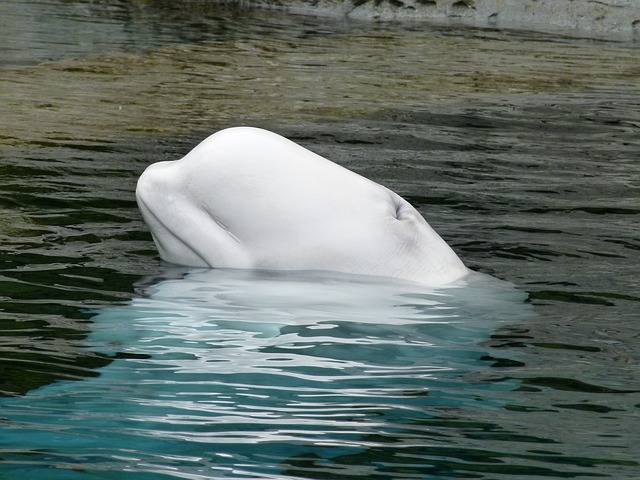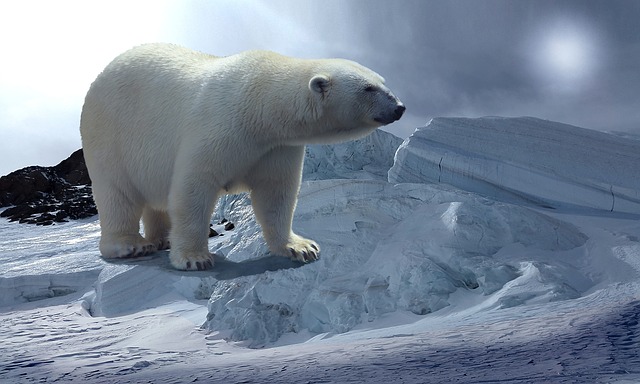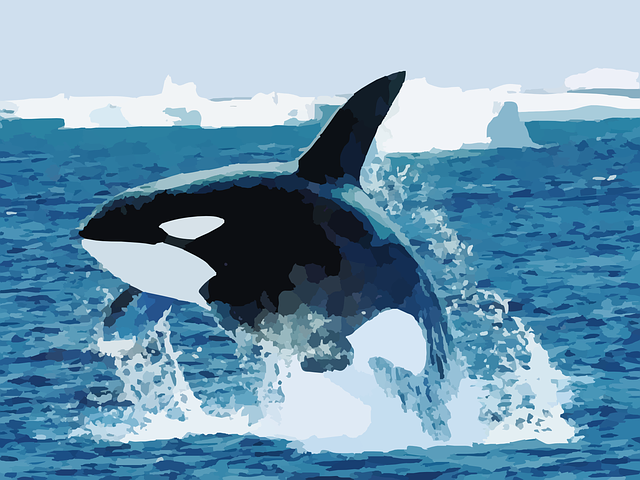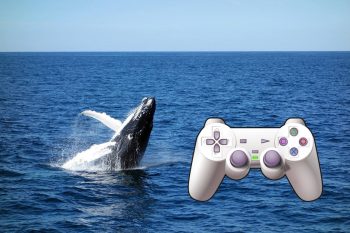
All beluga whales found in Alaska are protected because they are on the list of endangered species. They can live in nature for about 50 years. There are less than 100,000 individuals in the world, so efforts must be taken seriously.
What threatens the beluga whale in the last 50 years is not only its predators. This also occurs due to environmental pollution and noise pollution.
Why Beluga Whales are Endangered?
For centuries the Beluga was hunted in the populations of Alaska, Russia, Canada primarily for its meat, fat, and skin. The skin of the Beluga, among the cetaceans, is thick enough to be tanned.
As the routes of their migration is predictable, and during the summer they approach the coasts. That facilitated the hunt.
During the eighteenth and nineteenth centuries and at the beginning of the twentieth century there was a radical decrease in the population of Belugas in the Arctic. More than 20,000 beluga whales died
From the 20s of the twentieth century began to consider that the whale was a threat to the fishing industry. Supposedly because they fed on large quantities of cod, salmon, tuna and other fish. Basic fish for the subsistence of the peoples of the region. They even offered the reward of $ 15 for each captured Beluga. Only in 1950 did they recognize that the threat was overestimated. But at this point, the population of Beluga whales was already threatened.
To this day, the Inuit natives of the Arctic still maintain subsistence hunting for food and raw materials. Annual deaths add up to 200 to 550 in Alaska and about 1,000 in Canada.
Natural predators of the Beluga Whale

The polar bear is one of the predators
The polar bear is one of the predators. Esso happens during the winter season in the Arctic. The Belugas are sometimes trapped in the ice, without the possibility of escaping to the open sea. As they need to climb to the surface to breathe every 20 minutes, the bears find them thanks to their nose and manage to grab them and get out of the water despite having less physical build.
There is a report of a polar bear that weighed approximately 160 kg and was able to catch a Beluga that weighed more than 900 kg. As for these predators, we can not question why they do not kill for sport, not for sport, but to feed and survive.

Another natural predator of the Beluga is the Killer Whale or Orca.
Another natural predator of the Beluga is the Killer Whale. Many times the male reaches a weight of more than 5000 kgs has a considerable advantage in hunting a Beluga. The Killer Whale occupy the subarctic region and share much of the habitat of the belugas. The only protection they have is their color, The white coloration of the skin, is an adaptation to life in the Arctic, which allows these whales to camouflage themselves between the polar ice caps and protect themselves in this way against their predators. As they have a very sensitive sense of hearing they can hear the approach of that predator.
The populations of Beluga sometimes remain near or under the ice sheets looking for some protection because the enormous dorsal fin of the Orca, of up to two meters in length, prevents the orcas from maneuvering under the ice floes or getting close enough to the vents.
Maritime noise is a threat to the Belugas
Beluga has a very developed sense of hearing thanks to its auditory cortex. This animal is capable of listening to sounds in a range between 1.2 kHz and 120 kHz, with higher sensitivity between 10 and 75 kHz. So that we can better understand the average range of hearing for a human is 0.20 to 20 kHz.
The boats emit strong sounds and vibrations that travel under the water to look for submarines when these waves collide with the whales they disorient them remarkably as they confirmed scientists.
That negatively affects the whales when they bounce off these sound waves.
These large mammals strangely can even leave places full of food and in the worst case end up stranded on the beaches where it is not difficult to find death.
Another cause of death is that the route of the whales often crosses with the routes of the ships and these crashes kill them.
Attempts to solve that problem
Researchers in Quebec hope that a computer simulator that resembles a video game can help save belugas in danger of extinction. The team is working to add a new dimension that allows them to calculate the “acoustic footprint” of each ship to discover how to reduce the impact of engine noise on sensitive mammals.
The noise pollution caused by boats can have an impact on whales. That happens because they use sound to communicate, navigate and hunt.
Basically, he said, the aim of the simulator is to help scientists, the government and the marine industry find ways to reduce the impact of this traffic on marine mammals.
Contamination
Alaska experienced the worst ecological tragedy in its history, by running the oil tanker and pouring millions of liters of oil that expanded over 2,000 kilometers of coastline. To clean the oil stain, vacuum cleaners and pressurized hot water hoses were used. The oil that still contained the Exxon Valdez was transferred to another oil tanker.The damage to the fauna that occurred in this area is still being studied.
The oil industry has shown again and again that it is not prepared to handle the risks and consequences of drilling in the Arctic. A director of a Canadian company that specializes in spill treatment said that “there is no solution or method to date that can recover an oil spill in the Arctic.” The Exxon Valdez spill recovered only 9%.
You can understand the threat that results from these extractions because a spill not only threatens the whales themselves that have Arctic habitat but threatens the animals that feed the whales.
Beluga Whales declared as threatened animals
The federal government named the Beluga whales of Cook Inlet as an endangered species in 2008. A 1979 survey had nearly 1,300 Beluga whales. A 2014 survey estimated only 340 and a population that continues with a downward trend.
According to James Balsiger, interim director of the Fisheries Service in the National Oceanic and Atmospheric Administration, the situation is worrisome. He coment:”Despite the protections already established, the Beluga whales of the Cook Inlet do not recover.”
The association has commented that, apart from hunting, the greatest dangers are:
- extraction of gas,
- the exploitation,
- oil and pollutant discharges into the water that comes from industries close to the area.
The data is alarming. Between 1994 and 1998, the population of beluga whales in Cook Inlet decreased by 50%. Despite the measures taken since then, the number of species of yesteryear has not been recovered.
Toxoplasmosis threatens the Belugas
The Beluga carcasses were examined between 2009 and 2012, 44% were infected by Toxoplasma gondii.
A new study suggests that belugas are increasingly infected with a parasite known as Toxoplasma gondii. The feces of contaminated cats transmit these parasites. The parasite that causes toxoplasmosis can kill belugas, they lodge in the brain and in the heart. So their presence can have an impact on their lives.
Toxoplasmosis is increasingly common in a wide range of marine mammals. It is spread by wild and domesticated cats, which contract when eating rodents. It can cause neurological problems and behavioral changes.
At the last count, some 900 belugas lived in the San Lorenzo estuary. Cats are the ones that eat contaminated rats. Keeping domestic cats indoors prevents them from eating infected prey. Also, stop throwing cat feces into the toilet, reduce parasite levels in the water.. The parasite is very resistant, to the point of resisting water treatment.
Aid conservation efforts to Beluga Whale
The IoT Solutions World Congress will be launched in Barcelona in mid-October and a company based in Zaragoza plans to demonstrate how its technology will save beluga whales in Alaska.
Libelium will test a solution together with the state government to monitor air and water quality after a gas leak at Cook Inlet. This area is the home of the beluga whale in danger of extinction. The sensors monitor pollution levels that affect whales and other aquatic mammals in the area.
Climate change threatens the Beluga Whale
As climate change progresses, it affects ice at the poles. When it melts, the temperature of the ocean water changes.It also makes the litters of ice where they look for their food thinner. And they stop being an appropriate place to look for food.
These changes make whales change their routine, places where they look for food and the amount of food they need is also lower.
The beginning link of the ocean in its food chain and, as a result, there are fewer worms, krill, shrimp, amphipods and clams on the seabed. This reduction will adversely affect all the marine fauna that feeds on such creatures that inhabit the seabed. To that marine fauna, we emphasize the Beluga whale.
We could observe that the greatest threat to the Beluga, came from the human being himself and his excessive ambition. His interest in developing ventures without taking into account what it would cause in nature has contributed. Now, even though some political, commercial or philanthropic organizations worry about wanting to fix the problem. All their efforts still could not make the Belugas population recover. Hopefully, with time you can reverse the situation of that beautiful mammals.
You may also like…
Download educational and entertaining whale games and realistic whale simulators for child, teenagers and all ages. Enjoy learning or playing with the best nature games people prefer. If you love whales and the ocean this is the place to begin your entertainment.
In ofWhale.com you can find the online whale toys you’re looking for, like baby shark toys, stuffed toys or a whale bath toy. Let’s get started with the selected gallery or check more options on the links.
In our world, whales have a great message to transmit to humanity and we agree with them. For you and for your children choose the whale t-shirts best fits your message
You want to go further than just follow the first step by step tutorials about whale drawings. Ofwhale.com is the place where you can find books and models you need to go deeper into the ocean and learn to draw your preferred whales and marine creatures.




